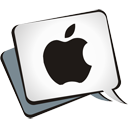Apple’s Apple Watch has long been praised as one of the most advanced consumer health devices on the market. Among its most useful features is the Blood Oxygen app, which allows wearers to measure their SpO₂ levels in real time. But in 2024, Apple suddenly disabled this feature on its newest watches in the U.S., leaving many users frustrated and confused. The reason wasn’t technical—it was legal. Now, in 2025, Apple has managed to bring the feature back, but with an important twist that changes how users interact with it.
The Disabling: A Legal Setback (Early 2024)
In early 2024, Apple faced a major legal setback when the U.S. International Trade Commission (ITC) ruled that some of its Apple Watch models—the Series 9 and Ultra 2—violated Masimo’s patents related to pulse oximetry (blood-oxygen sensing) technology. This ruling triggered an import ban on those models unless Apple removed the infringing feature.
As a stopgap, Apple disabled the Blood Oxygen monitoring feature in affected models sold in the U.S., including the newly launched Series 10. The hardware remained unchanged, but the functionality was removed via watchOS updates—making the feature unavailable on U.S.-sold units post-January 18, 2024.
Importantly, Apple Watch units sold before the ban—or those purchased outside the U.S.—retained the original Blood Oxygen app and functionality unaffected.
The Pivot: A Smart Workaround (August 14, 2025)
Fast forward to August 14, 2025, when Apple rolled out a clever workaround, enabled by a favorable U.S. Customs ruling. Through simultaneous software updates—iOS 18.6.1 for iPhones and watchOS 11.6.1 for Apple Watches—Apple brought back Blood Oxygen monitoring for the affected U.S. models.
The catch? The experience is now split between devices:
- The Apple Watch still captures the raw sensor data.
- But the data is now processed on the paired iPhone, not the watch.
- Users can view their blood oxygen readings in the Health app’s “Respiratory” section on the iPhone—not on the watch itself.
Apple’s official statement emphasized this redesign as a sophisticated solution that follows U.S. Customs guidelines while restoring core functionality to U.S. customers.
Why This Matters—and What’s Changed
- Legal compliance, with a user-friendly fix: This workaround allows Apple to sell its latest Watch models with Blood Oxygen monitoring in the U.S., while respecting patent law.
- Still less seamless: Users can’t check their SpO₂ directly on the wrist—they must rely on their iPhone to view results.
- Not universal: Only Apple Watch Series 9, Series 10, and Ultra 2 units sold in the U.S. after the ban (post-January 2024) are affected. Units sold before or outside the U.S. retain the original on-watch functionality.
- Community nuance: Some users on Reddit note that, after updating, the Blood Oxygen app may still show “not available” until a required asset is downloaded. Opening the ECG app or the Health app on the iPhone can initiate this process.
Summary Table
| Stage | Details |
| Disabling (2024) | Blood Oxygen feature removed from U.S. Series 9, Ultra 2, and Series 10 due to ITC import ban. |
| Workaround (2025) | Feature re-enabled via iOS 18.6.1/watchOS 11.6.1; processing shifted to paired iPhone; data shown in Health app. |
| Limitations | Cannot view readings on the Watch; only U.S. models sold after the ban are affected. |
The Bottom Line
Apple found itself in a tough spot when a patent ruling forced the removal of Blood Oxygen monitoring from some of its newest Watches in the U.S. Instead of leaving the feature disabled indefinitely, the company devised a clever workaround—shifting data processing to the iPhone—to stay compliant while delivering much-needed functionality back to users.
That said, the user experience has changed: if you’ve been waiting to see SpO₂ results directly on your wrist again, you’ll need to rely on your iPhone—and make sure both devices are updated (iOS 18.6.1 and watchOS 11.6.1). For affected users, however, this workaround is a welcome fix—legalities met, and health tracking restored.


Leave a Comment
You must be logged in to post a comment.